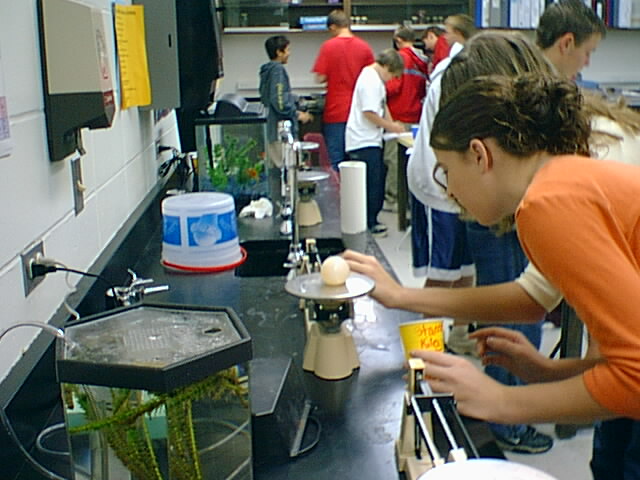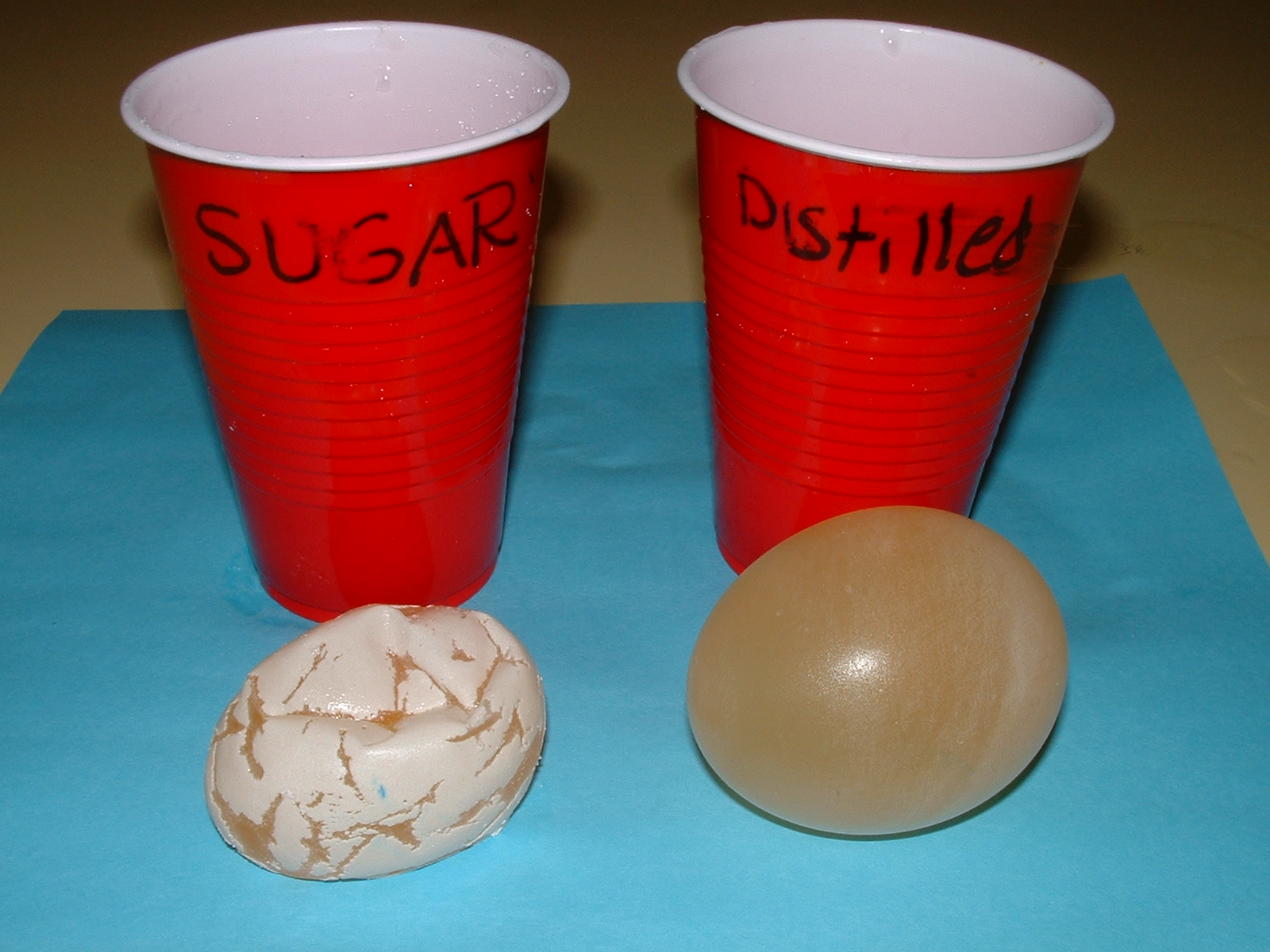Use of our material:
We have worked very hard on Activities, Powerpoints/games/worksheets, etc to make this a
resource for our students. If you are using our materials, please give us credit
for our efforts by listing us as a source with links to our site.
Any questions, comments, or
corrections can be directed to us at


 OSMOSIS
WITH EGGS LAB
Determining mass and circumference Slide show
OSMOSIS
WITH EGGS LAB
Determining mass and circumference Slide show
1. Buy enough eggs for each group to
have 2 eggs. Make a few extras in case of breakage. Place raw eggs in a
container and cover with vinegar. I use a low flat plastic tupperware-like
container. If you keep the lid on while they are soaking it doesn't smell so
bad. Allow eggs to soak several days to remove the calcium from the shell.
Check them as they are soaking and add some sugar to the vinegar if they seem to
be swelling up too much.
2. You will need a pitcher of
distilled water and a pitcher of sugar water. (I start with a half full gallon
container and keep adding sugar until no more will dissolve. It is really
thick!)
2. Each group will receive 2 eggs
and 2 plastic cups. Use slide show to remind them
about using triple beam balance and measuring with a ruler (cm). Students will use a balance to determine the mass of each
egg. Be careful, eggs will roll off the balance pans and desks. They will also
determine circumference (short way around) by wrapping a string around
their egg and then placing the string alongside of a ruler. Make sure they
do one egg at a time and keep track of which egg is which.
Egg data sheet
3. After measuring each egg.
Students will place one egg in sugar water (hypertonic) and one egg in distilled
water (hypotonic). Label cups with students names and liquid used.
4. Day 2: Students will determine
and mass and circumference on each egg and change the liquid on their egg.
GENTLY rinse the sugar water egg before
massing. Be careful grabbing the eggs out of the cups, especially as the
distilled water one gets bigger. It works best to have them take their cup to
the sink, hold their hand over the top and tip the egg out into their hand. Make
sure they keep track of which egg is which and get them back in the right
liquids.
5. Day 3: Determine mass and
circumference again.
5. The egg in sugar water will go
flat and the egg in distilled water will get huge! It is a cool visual and
the kids remember which way the water moves for cells in hypertonic and
hypotonic solutions because they remember what happened to their eggs.


Images by Riedell
Back to
Teacher Help Back to
Riedell Science HOME Back
to APBIO Teacher Help
Image sources:
Bird hatching:
http://biologyjunction.com/osmosis__diffusion_in_egg_lab.htm
Last modified 11/1/08
 OSMOSIS
WITH EGGS LAB
OSMOSIS
WITH EGGS LAB
